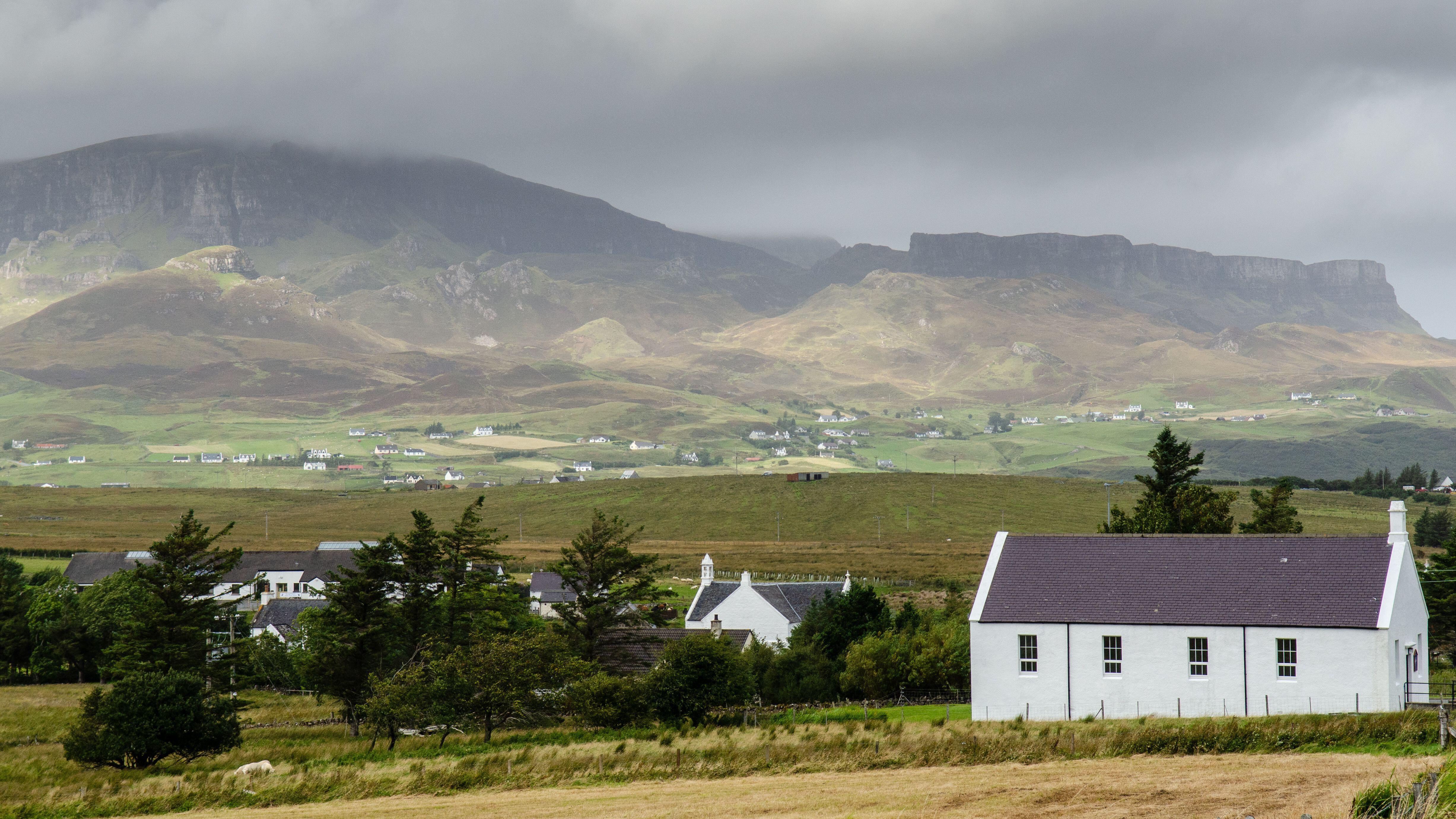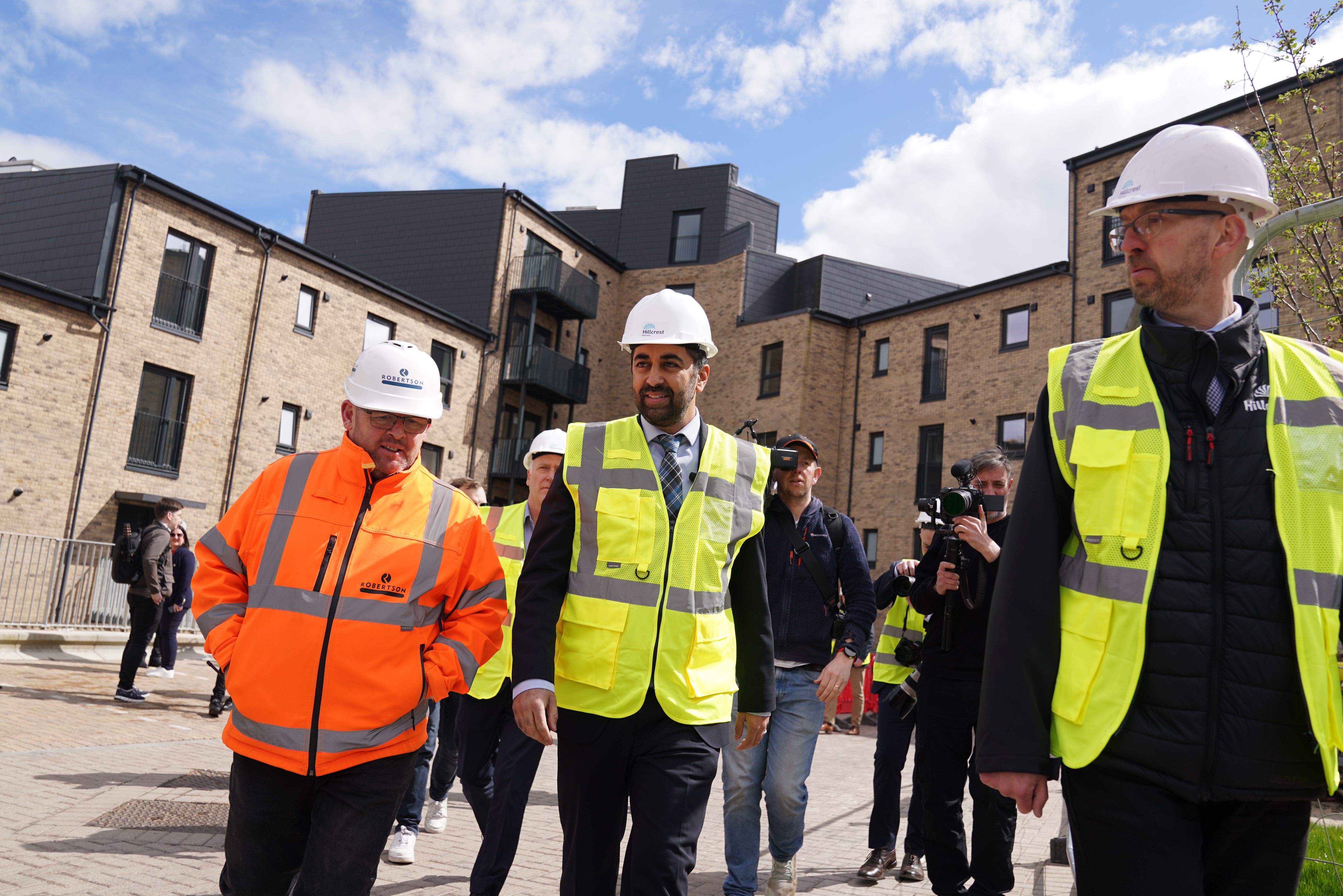Home Truths: The declaration of a housing emergency is recognition of a crisis which has been decades in the making
When Michael Gove was asked about the state of the UK housing crisis earlier this year, he gave a stark warning about its possible future political implications. The Secretary of State for Levelling Up, Housing and Communities said growing resentment over an inability to get on the property ladder could lead to a generation of voters turning away from democracy altogether. “It’s a barrier to young people feeling that democracy and capitalism are working for them,” Gove said.
“If people think that markets are rigged and a democracy isn’t listening to them, then you get – and this is the worrying thing to me – an increasing number of young people saying, ‘I don’t believe in democracy, I don’t believe in markets.’”
Gove, who has since announced his intention to stand down at the general election, leaves office having failed to get to grips with an issue which successive governments both at Westminster and Holyrood have chosen not to make a key priority. His party, which is predicted to lose heavily in the upcoming election, has betrayed a generation of young voters it now wants to force into national service.
For the roots of this crisis, however, we have to look further back than the current government. According to Centre for Cities, Britain’s housing shortage began at the start of the post-war period, not its end. In a report published last year, the think tank analysed data collected by the United Nations after the Second World War and found housebuilding in Britain fell way behind many of our European neighbours, leading to a shortfall of more than four million homes.
If there was already a problem with lack of supply in the latter part of the last century, then the situation became dramatically worse in the early 2000s as historically low interest rates and financial deregulation saw house prices surge while investors got rich from buy-to-let and those on modest incomes found themselves gradually priced out of the market in many of Britain’s towns and cities. In the 2020s this long-established and deep-seated housing crisis has left a generation of young people resigned to never owning their own home.
Attempts have been made by successive governments to tackle housing supply, but efforts have been constrained by nimby opposition and a housebuilding industry which can maximise its profits by making sure supply never outstrips demand. In cities such as Edinburgh, global, national and local factors have coalesced to make home ownership an impossible dream for many.

The lack of new homes has been keenly felt on island communities such as Skye | Alamy
“This is not something sudden, this is something that has grown steadily for at least the last 20 years,” says Professor Duncan Maclennan, an economist. “It may yet become an existential crisis but it has taken a long period of ignorance about the housing market, neglect of housing policy and sheer unreality about the incomes of poorer and young people.
“The policies that were adopted not in housing but in general social and economic policies in the 1990s created a situation where the demand side of the housing system reacts very quickly but the supply side doesn’t
“We deregulated the financial sector but left supply side arrangements – the ownership of land, the taxation of land – exactly the way it had been before. It means we have much more flexible finance and a completely inflexible land supply system.”
In Scotland the cost of a typical home is roughly five times average earnings, more affordable than the UK as a whole where the figure is closer to seven times average earnings, rising to around 16 times earnings in the most expensive parts of London. Nevertheless, in places where supply is particularly constrained it has become increasingly difficult for those with modest incomes to not only find a home but to be able to compete with those investing in property either for buy-to-let or for the purposes of a second home.
The problem is particularly acute on islands such as Skye, where last month a 27-year-old festival goer was forced to wait 45 minutes after a severe allergic reaction left her struggling for breath. Eilidh Beaton relied on RNLI volunteers giving her oxygen from their boat despite the incident taking place just a few hundred yards from Portree Community Hospital, which had been locked up for the night.
When the issue was raised in the Scottish Parliament the following week, along with the death of another woman, Heather Aird, at the same event, First Minister John Swinney said: “This should never have happened.” Indeed, a 2018 review carried out by Sir Lewis Ritchie had recommended the Portree hospital be available 24 hours a day, seven days a week. Instead, it currently provides urgent care by appointment only from 8.30am to 7.30pm at weekends and bank holidays.
Labour MSP Rhoda Grant was clear about the cause of the problem: “I have spoken to NHS Highland on numerous occasions about health services at Portree Hospital in the Isle of Skye,” she said. “Each time I do, they come back to me saying they can recruit but the people they recruit cannot find a home and they cannot take up the post.”
According to the first minister, 40 per cent more affordable homes have been built per head of population in Scotland since 2007 than in England, with the overall new house build completion rate in 2022/23 increased to 43 homes per 10,000 people, compared with 38 per 10,000 population in England and 18 in Wales. Swinney, who says £600m will be invested in affordable homes across Scotland this year, told parliament his government has a “formidable record on housing construction that we are proud to proclaim to the people of Scotland”.
And yet the same government was recently forced to declare a “housing emergency”, having slashed the affordable housing budget by £200m, roughly a quarter. Before leaving office, former First Minister Humza Yousaf announced an £80m increase to the same budget over two years, meaning an overall cut of 22 per cent in real terms from 2023/24. A separate £25m fund to secure homes for key workers, which was announced in 2023, has so far earmarked just four homes across the country. The declaration of an emergency followed the government’s backing of a Labour motion at Holyrood after the collapse of the power-sharing deal with the Scottish Greens. In November, it had voted against a similar motion.
The recognition of the crisis at a national level comes after councils including Edinburgh, Glasgow, Argyll and Bute, Fife and West Dunbartonshire all announced their own local housing emergencies. In the capital, the situation has been made worse by high numbers of holiday lets, a lack of council housing and developers more interested in building student housing than affordable homes. According to figures published earlier this year, there are currently around 24,000 people waiting for council housing in Edinburgh.
Alison Watson, director of Shelter Scotland, says the recognition of the national housing emergency is important but only if words translate into action. “We’ve seen some positive indications of intent from the new first minister, recognising that investment in housing is vital to building a fairer Scotland,” she says. “But the next programme for government can’t just be more of the same. In particular, the Scottish Government can’t keep asking local authorities to do more with less.”
Across Scotland there were more than 16,000 households assessed as homeless in 2023, up by four per cent on the previous year, and nearly 10,000 children were in temporary accommodation, an increase of eight per cent. At its most extreme, 1,400 housing applicants reported rough sleeping in the previous three months, with figures from the National Records of Scotland showing at least 244 people died in Scotland in 2022 while homeless.
Earlier this year, before the end of the Bute House Agreement with the Greens, the government published the Housing (Scotland) Bill which proposed a system of long-term rent controls. The government said the legislation would give renters in Scotland the strongest rights of anywhere in the UK. But the Scottish Association of Landlords (SAL) said the legislation would exacerbate the housing crisis. Since leaving government, the Greens have called on the SNP to renew its commitment to rent controls. However, recent figures from the Office for National Statistics (ONS) showed rents rose faster in Scotland than other parts of the UK while the controls were in place.

Humza Yousaf partially reversed a cut to the affordable housing budget just days before his resignation | Alamy
Maclennan says when it comes to the rental market, the government has been “strongly ideological” both in the choices that it has made and in its rhetoric. He says for the wider housing market, government must tax capital gains and put stability in property prices at the centre of housing policy.
“John Swinney, if he is going to demonstrate a new understanding and a new competence, has got to think about the business of doing housing better,” says Maclennan. “They could produce much better housing outcomes for Scotland than are achieved at present. The people who have benefitted from the system we have are homeowners, particularly the over 60s, and the people who own land.
“I think we will begin to see a shift in what’s acceptable in terms of taxation of housing. If Michael Gove and others want to avert the revolution… they might think about how we move from a system where the people who make no effort and simply hold assets from the past take most of the gains from economic development.”
For Watson and Shelter Scotland, the housing crisis is the result of political choices made by the current government and many of its predecessors both at Holyrood and Westminster.
“A lot of people when they think about homelessness think about rough sleeping,” she says. “That’s a truly dreadful and tragic experience for people to be literally on the street, but rough sleeping is the tip of a very large iceberg. Most of the homelessness in Scotland is an indoors issue. Real harm is still being done, particularly as local authorities are now struggling so significantly to find emergency accommodation.
“In terms of making the difference and demonstrating that they are serious about addressing the housing emergency, the Scottish Government should reverse the 26 per cent cut that they applied to the affordable housing supply budget back in December. There was a partial reinstatement of that budget, but it was only a partial reinstatement.
“During the debate in parliament last November when the housing emergency was first debated, John Swinney said at that time that if we want to declare a housing emergency, we need to be prepared to put money where our mouth is. I would ask John Swinney to follow through on that.”
Holyrood Newsletters
Holyrood provides comprehensive coverage of Scottish politics, offering award-winning reporting and analysis: Subscribe